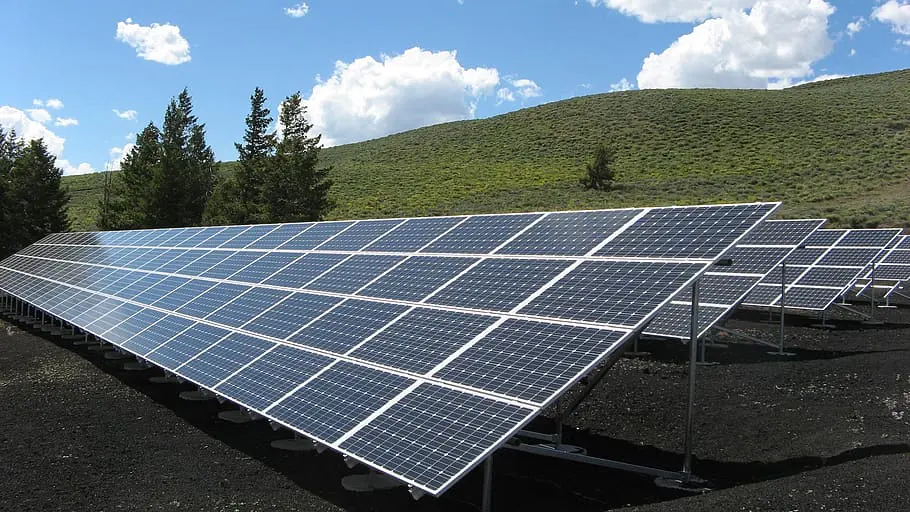
Dive into the role of renewable energy job creation and how it’s reshaping our future. A green world with promising careers awaits!
The role of renewable energy job creation is pivotal in driving global economic growth.
As we transition away from fossil fuels, renewable sectors offer sustainable, high-quality jobs, fostering both environmental and economic resilience.
The Role of Renewable Energy Job Creation
Ever wondered about the role of renewable energy job creation in our modern world?
It’s not just about saving the planet; it’s about building a brighter, job-rich future for all of us. Join us as we explore this transformative journey.
The transition from fossil fuels to renewable energy sources is not just an environmental imperative but also an economic one.
The renewable energy sector is rapidly becoming a significant source of new jobs, reshaping the employment landscape in the United States and globally.
Renewable Energy Job Growth Over the Past Decade
| Year | Solar Jobs | Wind Jobs | Hydro Jobs | Geothermal Jobs | Bioenergy Jobs | Total |
|---|---|---|---|---|---|---|
| 2012 | 100,000 | 50,000 | 40,000 | 10,000 | 20,000 | 220,000 |
| 2013 | 120,000 | 55,000 | 42,000 | 11,000 | 22,000 | 250,000 |
| 2014 | 145,000 | 60,000 | 44,000 | 12,000 | 24,000 | 285,000 |
| 2021 | 300,000 | 110,000 | 60,000 | 20,000 | 40,000 | 530,000 |
| 2022 | 330,000 | 120,000 | 65,000 | 22,000 | 43,000 | 580,000 |
| 2023 | 365,000 | 132,000 | 70,000 | 24,000 | 47,000 | 638,000 |
Historical Growth of Renewable Energy Jobs
Over the past decade, the shift compared to fossil fuels to cleaner energy sources has led to a surge in employment opportunities in the renewable energy sector.
Overview of past renewable energy job markets
In recent years, as the world grappled with the growing energy crisis and the need for energy security, the renewable energy industry emerged as a beacon of hope.
Reports from the International Renewable Energy Agency and the U.S. Bureau of Labor Statistics highlight the exponential growth in renewable energy jobs, outpacing the traditional fossil fuel industry.
Factors contributing to renewable energy jobs rise
The decline of coal mining, coupled with advancements in renewable energy technologies like solar panels and wind turbines, shows renewable energy can create and has paved the way for green jobs.
Governments, local communities, and the private sector have recognized the economic benefits of investing in clean energy can create three times the jobs leading to a surge in job opportunities.
The Different Sectors of Renewable Energy and Their Job Creation Potential

The renewable energy sector is diverse, with each segment offering unique employment opportunities.
From the installation of solar PV panels to the maintenance of wind turbines, the industry is ripe with potential.
Solar energy
Solar power, especially the solar PV manufacturing industry, has seen a significant rise in the past decade.
Growth rate
With an increasing number of countries adopting solar energy, the demand for solar jobs, especially in solar heating and solar cells installation, has skyrocketed.
Job roles
From the installer of solar PV panels to researchers working on efficient solar cells, the solar industry offers a wide range of job roles.
Wind energy
Wind power, especially offshore wind, is another segment witnessing rapid growth.
Growth rate
With advancements in technology and supportive industrial policies, wind energy has seen consistent growth in employment opportunities.
Job roles
From technicians maintaining wind turbines to engineers designing smart grids for efficient energy storage, the wind sector is bustling with job opportunities.
Hydroelectric energy
Hydroelectric power, one of the oldest forms of renewable energy, continues to be a significant contributor to the global energy mix.
Growth rate
With the increasing emphasis on green energy, hydroelectric projects have seen steady growth, especially in Asian countries with abundant water resources.
Job roles
From engineers designing dams to technicians maintaining the turbines, the hydro sector offers a plethora of job roles.
Geothermal energy
Tapping into the Earth’s internal heat, geothermal energy is a consistent and reliable source of power.
Growth rate
While it represents a smaller portion of the renewable energy sector, its growth rate has been consistent, especially in regions with significant geothermal activity.
Job roles
Geologists, drill operators, and plant operators are some of the key roles in this sector.
Bioenergy
Bioenergy harnesses power from organic materials, offering a sustainable energy solution.
Growth rate
With the decline of the natural gas sector and the increasing emphasis on reducing greenhouse gas emissions, bioenergy has seen a steady rise in importance.
Job roles
Agricultural specialists, biologists, and engineers are at the forefront of this sector, ensuring efficient energy conversion.
Economic Impact of Renewable Energy Job Creation

The economic implications of the renewable energy sector extend far beyond mere job numbers.
Direct and indirect job benefits
Beyond the direct employment in renewable energy projects, there’s a ripple effect in the job market.
Supply chains, from manufacturing solar panels to transporting wind turbines, benefit immensely.
Comparative job growth vs. non-renewable sectors
While the fossil fuel industry has seen a decline, especially in coal industry jobs, the renewable energy sector has witnessed a surge, promising a just transition for workers.
Potential for rural job creation and development
Rural areas, often left behind in economic growth, stand to benefit the most.
With vast lands suitable for wind farms and solar installations, these areas are seeing a resurgence in job opportunities.
Global Perspective on Renewable Energy Jobs

The renewable energy wave is not just a phenomenon of the developed world.
Regions leading in renewable energy job opportunities
Asian countries, followed by North America and the European Union, are at the forefront of renewable energy employment.
Future projections on global job creation
With the world united in its fight against climate change, the future looks promising.
Reports suggest a steady rise in renewable energy jobs, outpacing last year’s figures.
Challenges in Renewable Energy Job Market
Every industry has its set of challenges, and renewable energy is no exception.
Skill gap and training requirements
With the sector’s rapid growth, there’s a pressing need for skilled workers. Degree programs and training sessions are crucial.
Technological advancements and job displacement
As with any industry, automation and technological advancements can lead to job displacements.
However, the sector also promises new roles that didn’t exist a decade ago.
Policy and regulation impacts
Local governments and international bodies play a crucial role. Supportive policies can accelerate growth, while restrictive ones can hamper progress.
Clean Energy Job Creation FAQs

Navigating the world of clean energy can spark a flurry of questions, especially when it comes to job opportunities in this rapidly evolving sector.
Our comprehensive “Clean Energy Job Creation FAQs” aims to shed light on the most pressing queries, offering insights into how the green revolution is not just transforming our energy landscape, but also reshaping the employment market.
Dive in to get a clearer picture of the future of work in the clean energy realm!
Q: How many jobs has the renewable energy sector created in the past decade?
A: According to the International Renewable Energy Agency’s annual review, the renewable energy sector has created millions of jobs worldwide in the past decade, with solar power and wind energy leading the way.
Q: Which renewable energy sector has the most job opportunities?
A: Solar energy, especially the solar PV manufacturing industry, currently offers the most job opportunities, closely followed by wind energy.
Q: How does the growth in renewable energy jobs compare to fossil fuel jobs?
A: While fossil fuel jobs, especially in the coal industry, have seen a decline in recent years, renewable energy jobs have witnessed a consistent surge.
The transition to a clean energy economy has led to a shift in employment opportunities from the fossil fuel industry to the renewable sector.
Q: Are renewable energy jobs sustainable in the long run?
A: Yes, renewable energy jobs are sustainable. As the world continues to prioritize energy efficiency and combat climate change, the demand for renewable energy sources will only increase, ensuring the longevity of jobs in this sector.
Q: How does the U.S. compare to other countries in renewable energy job growth?
A: The United States has made significant strides in renewable energy job creation, especially in the solar and wind sectors.
However, Asian countries, particularly China and India, have seen a more rapid growth rate due to their larger domestic market size and government initiatives.
Q: What roles do international organizations like the International Renewable Energy Agency and the International Labour Organization play in the renewable energy job market?
A: These international organizations provide crucial data, research, and support to countries worldwide.
They help in policy formulation, offer insights into best practices, and promote the economic benefits of transitioning to renewable energy.
Q: With the rise of electric vehicles, how is the job market expected to change in the renewable energy sector?
A: The rise of electric vehicles (EVs) is expected to boost the renewable energy job market further.
As the demand for EVs grows, so will the need for clean energy to power them, leading to more job opportunities in energy storage, smart grids, and charging infrastructure.
Q: How are supply chains affecting the growth of renewable energy jobs?
A: Supply chains play a pivotal role. From the manufacturing of solar panels and wind turbines to their installation and maintenance, a robust supply chain ensures job creation at every step.
However, supply chain disruptions can temporarily impact job growth.
Q: How are local communities benefiting from the growth in renewable energy jobs?
A: Local communities, especially in rural areas, benefit immensely from renewable energy projects.
These projects bring in employment opportunities, and infrastructure development, and often lead to higher wages and improved living standards.
Q: What is the future outlook for renewable energy jobs in the face of technological advancements?
A: Technological advancements, while leading to some job displacements, primarily open doors to new roles and opportunities.
Innovations in energy storage, smart grids, and energy efficiency will continue to drive job growth in the renewable energy sector.
Renewable Energy Job Creation Conclusion

The renewable energy sector is more than just an environmental need. It’s an economic powerhouse.
As we transition to a clean energy economy, the promise of sustainable jobs, economic growth, and a brighter future becomes evident.
The shift from fossil fuels has not only paved the way for a cleaner environment but also for a robust and thriving job market that promises to reshape economies worldwide.
The Long-Term Impact of Renewable Energy Jobs
The growth in renewable energy jobs isn’t just a fleeting trend. It’s a testament to a global shift towards sustainability.
As the world grapples with the challenges of climate change, the renewable energy sector stands out as a beacon of hope.
Economic Resilience:
The surge in green jobs has provided a cushion against economic downturns, especially in regions previously reliant on declining industries like coal mining.
With the renewable energy sector offering higher wages and more stable employment, communities are experiencing a revitalization.
Environmental Benefits:
Beyond the obvious reduction in greenhouse gas emissions, the growth in renewable energy jobs signifies a broader commitment to environmental stewardship.
As more individuals work in this sector, there’s a ripple effect, leading to increased awareness and advocacy for sustainable practices.
Societal Transformation:
The rise in renewable energy jobs also brings about societal change.
From educational institutions offering specialized courses to local governments implementing supportive policies, the societal fabric is evolving to support this green revolution.
The Path Forward: Embracing a Green Future
The current trajectory in renewable energy job growth is promising, but the journey doesn’t end here.
Continued Investment:
For the momentum to continue, both private and public sectors need to invest in renewable technologies.
Whether it’s funding research for more efficient solar cells or supporting wind energy projects, investment is the key.
Innovation and Adaptability:
The renewable energy sector, like any other, will face challenges.
Technological advancements, supply chain disruptions, and policy changes can impact job growth.
However, with a spirit of innovation and adaptability, the sector can navigate these challenges and continue to thrive.
Education and Training:
As the sector grows, so does the need for skilled professionals. Educational institutions, in tandem with the industry, should offer courses, training programs, and workshops to equip the workforce with the necessary skills.
By understanding the long-term impact and charting a clear path forward, the role of renewable energy in job creation can continue to be a transformative force for the global community.






